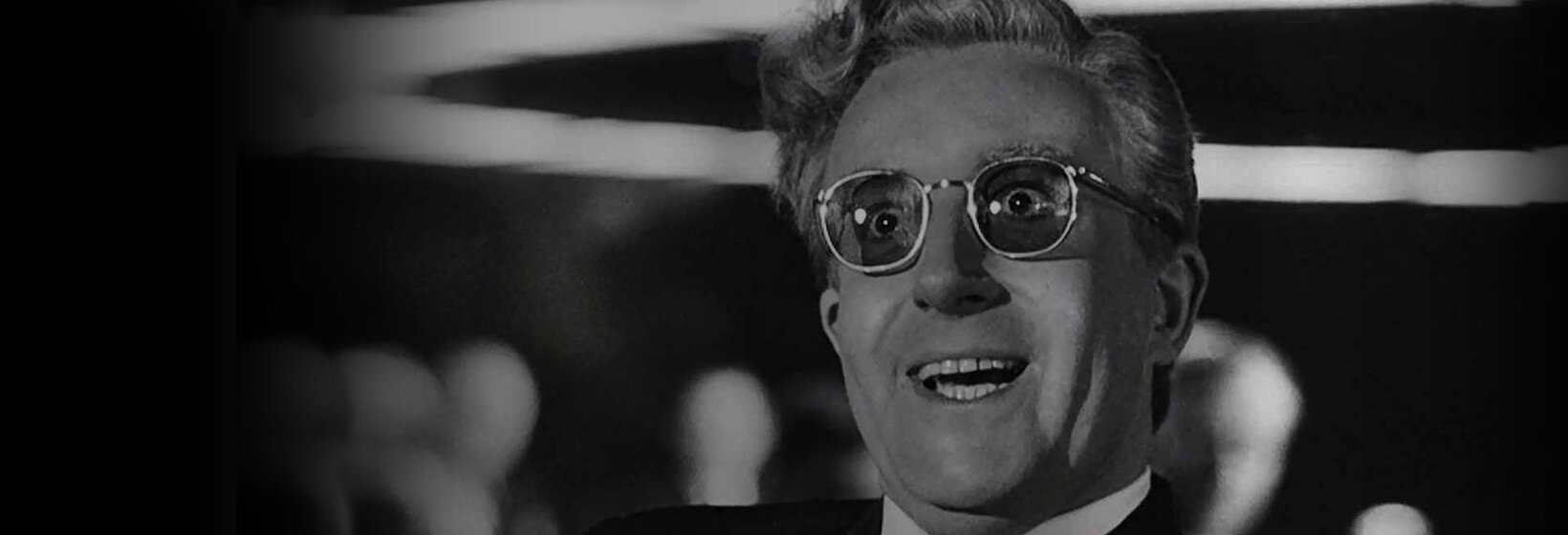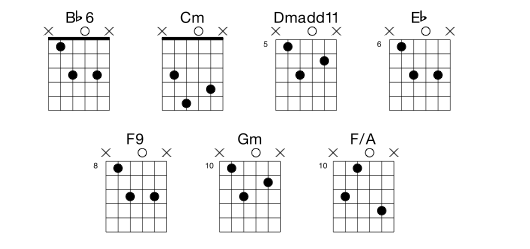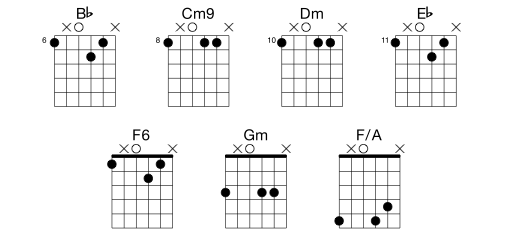
How I Learned to Stop Worrying and Love the Key of Bb
Tips for mastering this difficult key on guitar.
When the worship leader starts a sentence with “We’re going to change this song from the key A to the key of…” we hold our breath, instinctively hoping for E, D, C, or G. Unfortunately, that sentence usually finishes with something like “…Bb”.
Every guitarist lets out a frustrated sigh and either reaches for a capo or starts brushing up on their bar chords. I used to do the same until I started playing with the open strings in the key and found some chord shapes that have become some of my favorites.
The first chord shape family uses the open G string beautifully and can be played by keeping the bass note on the A string for every chord.

This second family takes advantage of the open D string to pull out some interesting voices. It also allows you to keep your bass note on a single string though this time you are hanging on the E string.

Of course there are plenty of additions you can make to these. As always remember, the more you stray away from the most common voicing, the easier it is to play chords that clash with what your band is playing so let your ear be your guide.
Comments
Love the Key of Bb
Submitted by Mhprutz1 on March 27, 2016 - 1:08am.
Okay, I just ran across this post. Everyone should take a look at this. This is some great stuff. Definitely makes me want to tackle some of those more "mysterious" keys.
Thanks, Jason!
Key of Bb friend or foe
Submitted by babbs4jc on February 22, 2018 - 10:57am.
I have been playing piano/keyboard in church for around 43 years. The key of Bb was always a popular key for the new and upcoming choruses, hymns and even special song numbers. I love the key of Bb as well as Eb, F, Ab, Db and sometimes Gb. The pianist/keyboard/organist had to learn and know these keys. It is a very pretty key to play in. Imagine my surprise when I started playing in worship bands back in the early 1980's and played in the keys of E, A, B, well, you get the picture. Key's we never concentrated on in church music. If it was written in the key of A, we would transpose it to Ab. Key of B, changed to Bb if you get where I am going.
Now, A, B, E, etc... are easy for me. LOL. Who would have thought all those years ago when the type of chorus we sang was "This is the Day" and other Hosanna beginners.
Dead links?
Submitted by Bereanworship on March 5, 2018 - 11:35am.
Hey tried clicking the links in this post to the other tutorials for chord shapes and they seem to not be working, just FYI!
Bb is my friend
Submitted by hope.kerr94 on March 6, 2018 - 6:57am.
Not going to lie, I love writing/playing in the key of Bb. I might have an attachment to it.
Interesting
Submitted by Liam. on March 15, 2018 - 8:33pm.
I'm not sure how happy the band director would be if I played a Ebmaj7 with a D in the base. Or a Cm9 with the Eb a mi9 interval above the D. I like some of these voicings, however there are ways to play these chords to sound fuller in my opinion by doubling the root instead of the third or fifth. Just letting you know that I believe there is a typo on your last F/A, the top note you have as an Eb which makes the chord sound like an Am7b5. I'm thinking you meant to have the top note as a F on the 6th fret of the B string.
I'd be interested to hear if you have any tips on how to interpret a click track musically. I've heard from a number of people now that it is important but I'm finding it difficult to pull and push the time with a click track and would be curious to see if you have any tips.